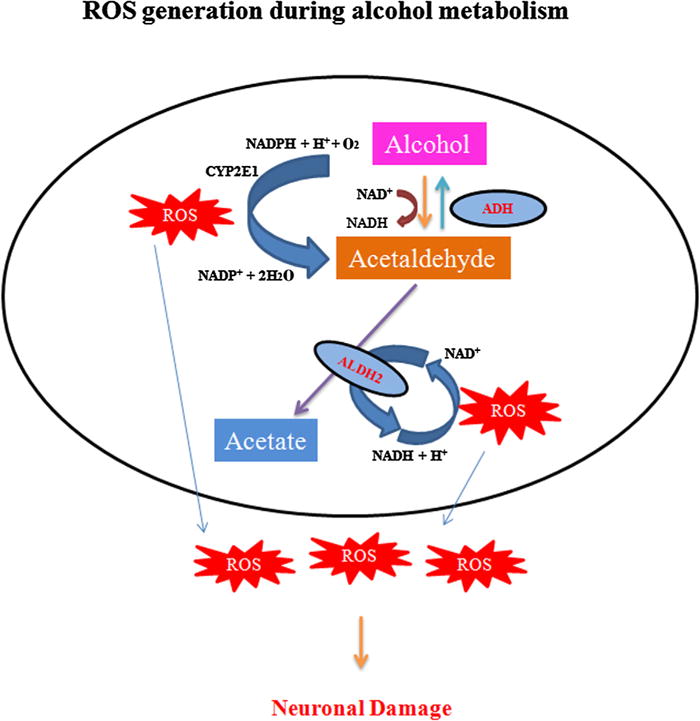Fig. 2.

Induction of oxidative pathway response during alcohol metabolism. Upon exposure to alcohol, the cellular alcohol dehydrogenase enzyme (ADH) is activated in the cytosol, which metabolizes to produce acetaldehyde. During long term exposure or chronic alcohol consumption, an enzyme in the endoplasmic reticulum, cytochrome P450 IIE1 (CYP2E1), becomes activated and alcohol gets metabolized to acetaldehyde. The derived acetaldehyde enters into the mitochondria and is further metabolized into acetate mainly by aldehyde dehydrogenase 2 (ALDH2). Thereby, it results in the formation of reactive oxygen species (ROS), which leads to neurotoxicity and damage.
